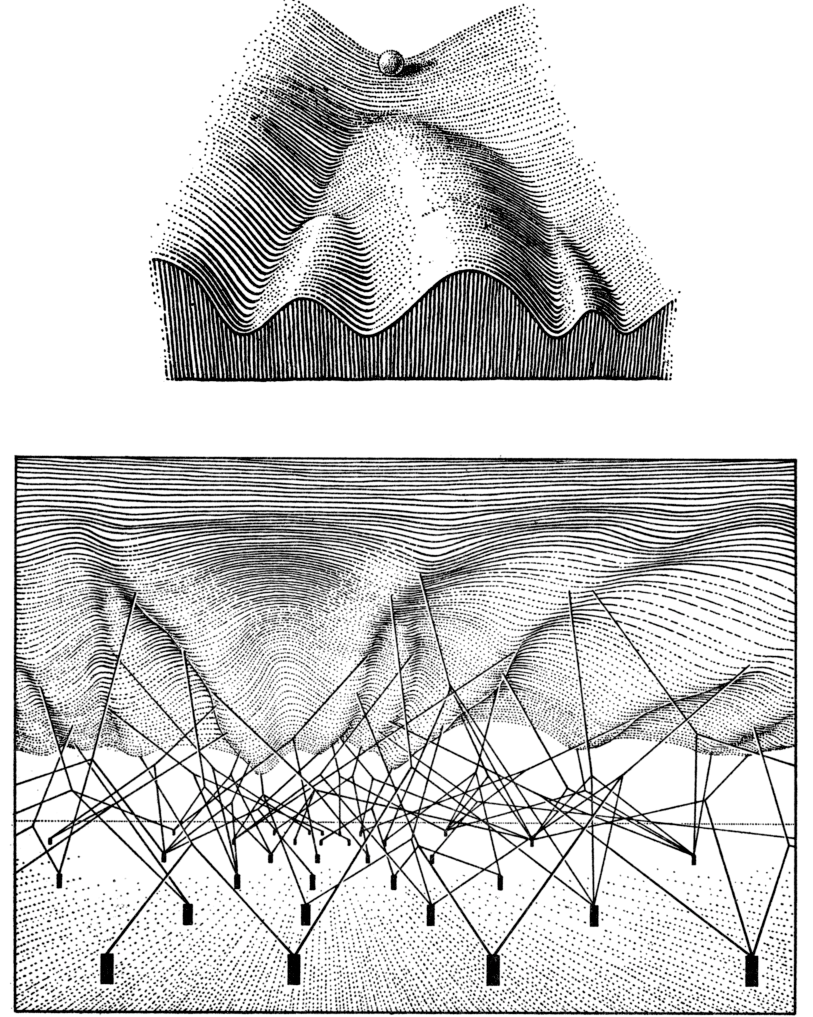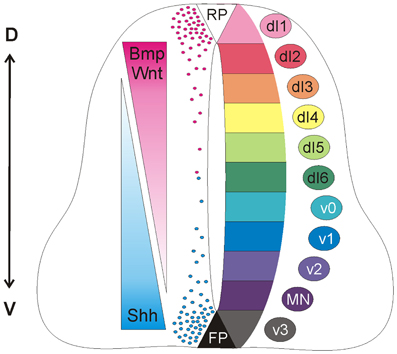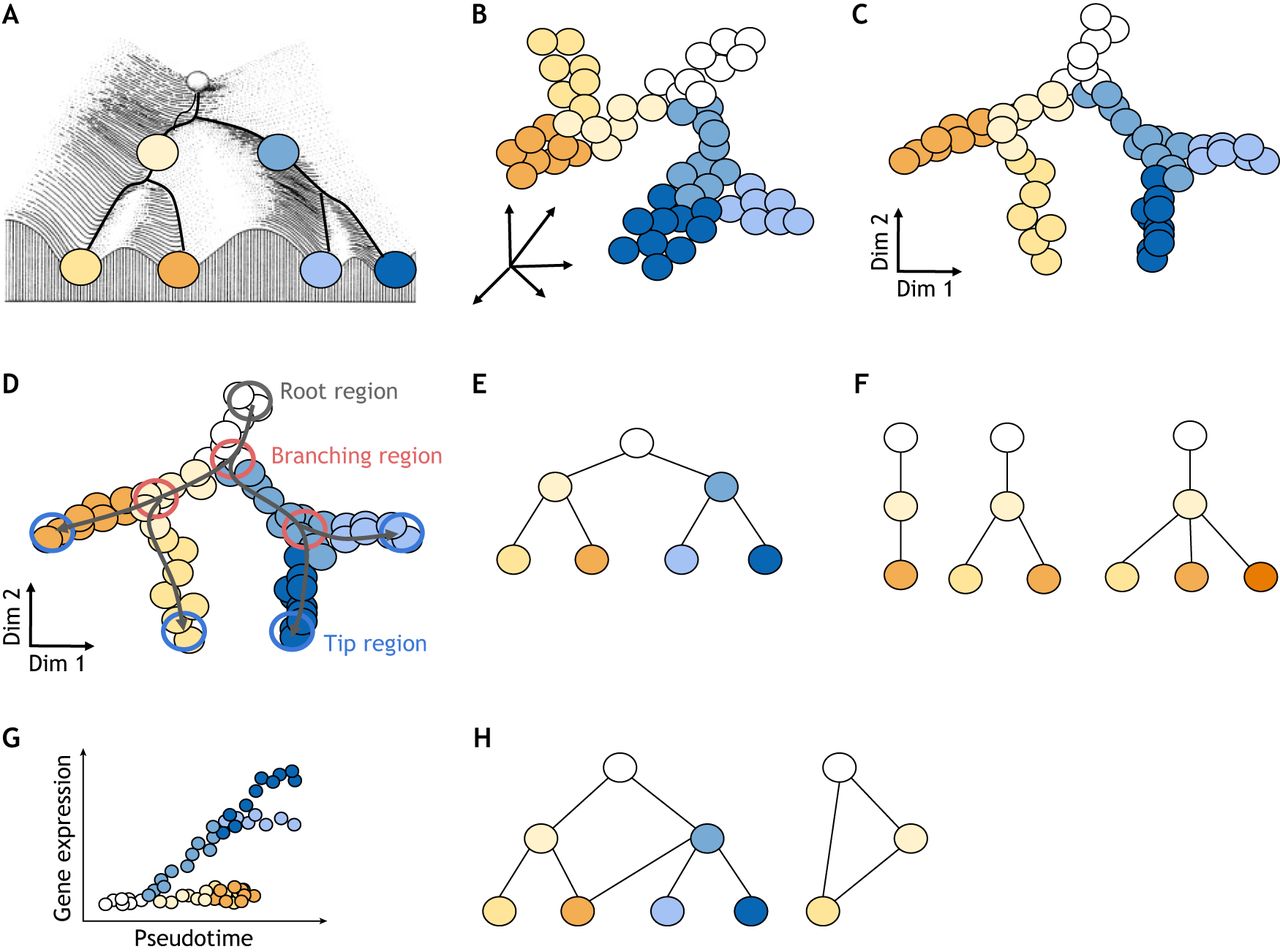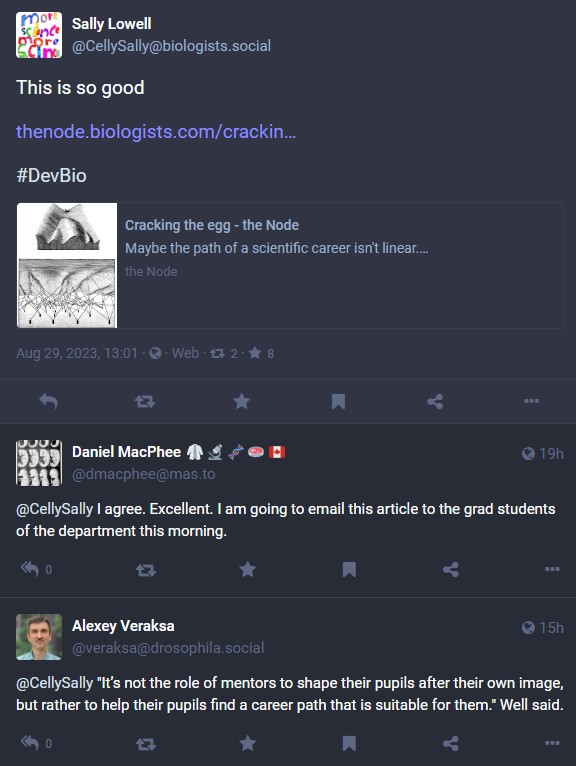Cracking the egg
Posted by Brent Foster, on 29 August 2023
Lessons from developmental biology in how to navigate the scientific career-scape
Between the fifth and tenth days the lump of stem cells differentiates into the overall building plan of the mouse embryo and its organs. It is a bit like a lump of iron turning into the space shuttle.
~Miroslav Holub, Czech poet and developmental biologist
My email pings less than 20 minutes after I work up the courage to send a follow-up message to the biology PhD program. It’s April 14, 2020 — one month after Florida shut down for the COVID-19 pandemic.
As I read the message — I would say there is virtually no chance you would hear positively from us — the proverbial rug is pulled out from under me, the vision of my scientific career destabilizing as fast as ocean waves disintegrating a child’s sandcastle. I am set adrift, yet at the same time frustratingly stuck, forced to face the seemingly infinite possibilities in response to the question: What do I do now?
See the landscape for what it is
It’s been three years, and that question still nags at me as I try to answer it. My conclusion? Maybe the path of a scientific career isn’t linear. Maybe it’s more like Waddington’s epigenetic landscape — a metaphorical description of development that begins with a single egg, with its myriad potential like a marble poised at the peak of a complex and shifting geography. This marble can roll down any number of paths into valleys representing cell divisions and their subsequent differentiations into terminal cell fates.
At first glance, this landscape appears rather straightforward. We don’t see the system of “guy ropes” attached to “pegs” that shape the surface area at the whims of genetic and environmental inputs.

I always assumed that a true science career began with graduate school. But the odds of getting into a PhD program, at least in the US, is only about 20%. That means for every applicant who shouts in excitement after receiving an acceptance notification, four others are staring blankly at their computer screens, hearts thumping as they wonder: What do I do now?
In 2020, I was part of the 80% majority. But I felt very much alone in the quiet lockdown of COVID-19. I didn’t even feel like I had a right to be sad — after all, I had my health, still had my job as a laboratory technician. Surely there were other opportunities for a fledgling scientist like me.
I looked for them, too. In my mind, I needed something that was still applicable to my interest in biology. With the pandemic, I wanted something that would allow me to work from home, if need be. Bioinformatics was appealing, although given my lack of computer savvy I knew there would be a learning curve. I just hoped I could crawl up that steep slope of my personal landscape.
In the fall of 2020, I took bioinformatic classes through the online Harvard Extension biotechnology program. I was enamored with the name and the prestige — so much so that I lost sight of the “wondrousness of this wonder” of biology as I got bogged down in computations and repeated syntax errors flashing on my computer screen, stuck in the rut of wanting a degree for a degree’s sake. It didn’t take me long to realize that this online program was not the right fit for me.
Here, once again, my personal landscape shifted and the possibility of a career in science seemed beyond my reach. I struggled to sleep at nights. I even tried distracting myself with daily 7 mile runs, every pounding step the question echoing: What do you do when you don’t know what to do?
Lean into conflicting signals
Much of early development is determined by antagonistic relationships of gene expression — a wrestle between conflicting signals.
One well known example is the role of sonic hedgehog (Shh) and Bmp/Wnt in forming the vertebrate spinal cord. High concentrations of Shh, secreted from the floorplate, instruct nearby cells to be “ventralized.” But the signal gradually fades and eventually meets the opposing Bmp/Wnt signals coming from the roof plate promoting more dorsal cell identities. It’s in this conflict of gradient signals that a unique cell identity code emerges, specifying the neural progenitor cell subtypes along the axis of the future spinal cord. It’s fascinating to me how seeming conflict — an identity crisis, if you’ll allow the anthropomorphism — eventually resolves itself into a whole organism, given the proper signaling gradient across time and space.

In the months and years after my rejected grad school applications, I went through my own identity crisis. On an intellectual level, I knew the notifications may be more a reflection of a lack of funding, space, or resources and not necessarily of my abilities as a future scientist. On an emotional level, I couldn’t shake my feelings of worthlessness. But sharing my loss felt taboo while a pandemic raged, killing thousands of people or leaving them hooked up to ventilators. So I tried to ignore my feelings and push through, to climb up the cliff of my career’s landscape and remake myself.
One night at a socially distant social activity, I struck up a conversation with local news editor Brian McMillan. We talked about our interests in science and writing and the need for better science communication. He encouraged me to begin writing clips, starting with our local Palm Coast Observer. His invitation took root in my brain, a planted seed that just needed some nourishment and gentle coaxing to grow into something larger than what I saw at the time.
Since then, I’ve begun exploring the world of science communication. I was invited to attend the Creative Science Writing Workshop hosted by The Company of Biologists where I met others who wanted to tell the stories of science in ways that could move people. In October of last year, I was granted a New Horizons Fellowship to attend the SciWri22 conference in Memphis, Tennessee. There, I not only discovered a community devoted to telling the stories of science — I found the words to express the grief I didn’t know I was feeling and could finally begin the slow process of healing.
During one of the scientific sessions, St. Jude social worker Erica Sirrine introduced me to the phrase “disenfranchised grief,” or “grief experienced by those who incur a loss that is not, or cannot be, openly acknowledged, publicly mourned, or socially supported.” I saw myself — or rather, my experience — reflected in those words. I felt seen and acknowledged by a community, finally empowered to begin making sense of my hidden grief.
Find your niche community and join in
The growth of any science career, like the proliferating cells of a growing organism, requires collaborative interactions between individuals. No scientist, no matter their passion, can be formed in isolation. Mentors, both formal and informal, help us see ourselves — our strengths and weaknesses — and offer organizing principles that shape our career’s landscape. We do ourselves a disservice when we ignore these outside influences.
As a research community, we must crack the myth of a single career trajectory from masters to PhDs to post-docs to tenured faculty. That’s merely one path in the maze of the scientific landscape, a snapshot that misses the full dynamics of what a science career can be, where boundaries blur and overlap, molded into something no less miraculous than a space shuttle forming from a lump of iron ore while in outer space.

Focusing on tenure professorships at the exclusion of any other career path is myopic, even problematic. The number of PhD applications in the US swelled to 770,000 in 2021, growing nearly 10% since my applications were rejected. Of the 651,000 doctoral students in Europe that same year, nearly 40% were in the STEM field. In Asia, there are over 285,000 doctoral students. These statistics, incomplete as they are, hint that the supply of doctoral degrees is fast outpacing the demand for limited tenured track positions. It’s not the role of mentors to shape their pupils after their own image, but rather to help their pupils find a career path that is suitable for them.
That may be as practical as encouraging science trainees to engage in professional workshops like the one The Company of Biologists offered me last year. We need to hear the stories of scientists who have walked those paths less traveled and see the potential of exploring and even creating new spaces in science. So-called “alternative careers” are as real as academia and need to be de-stigmatized just as much as the grief that comes when doors seem so firmly shut.
A science career is not, nor has it ever truly been, a terminally differentiated state. It’s more like a stem cell niche, maintained in perpetuity until the right signal comes along. Then that marble can start to roll through its personal landscape. If a lab isn’t a right fit, well — there’s always another path, even if it’s unclear where it might lead.
I’m one of those still stuck in the in-between of an undifferentiated career state. But I’ve found a supportive community to encourage me along the way. And that has made all the difference.
Reactions from the community



 (3 votes)
(3 votes)